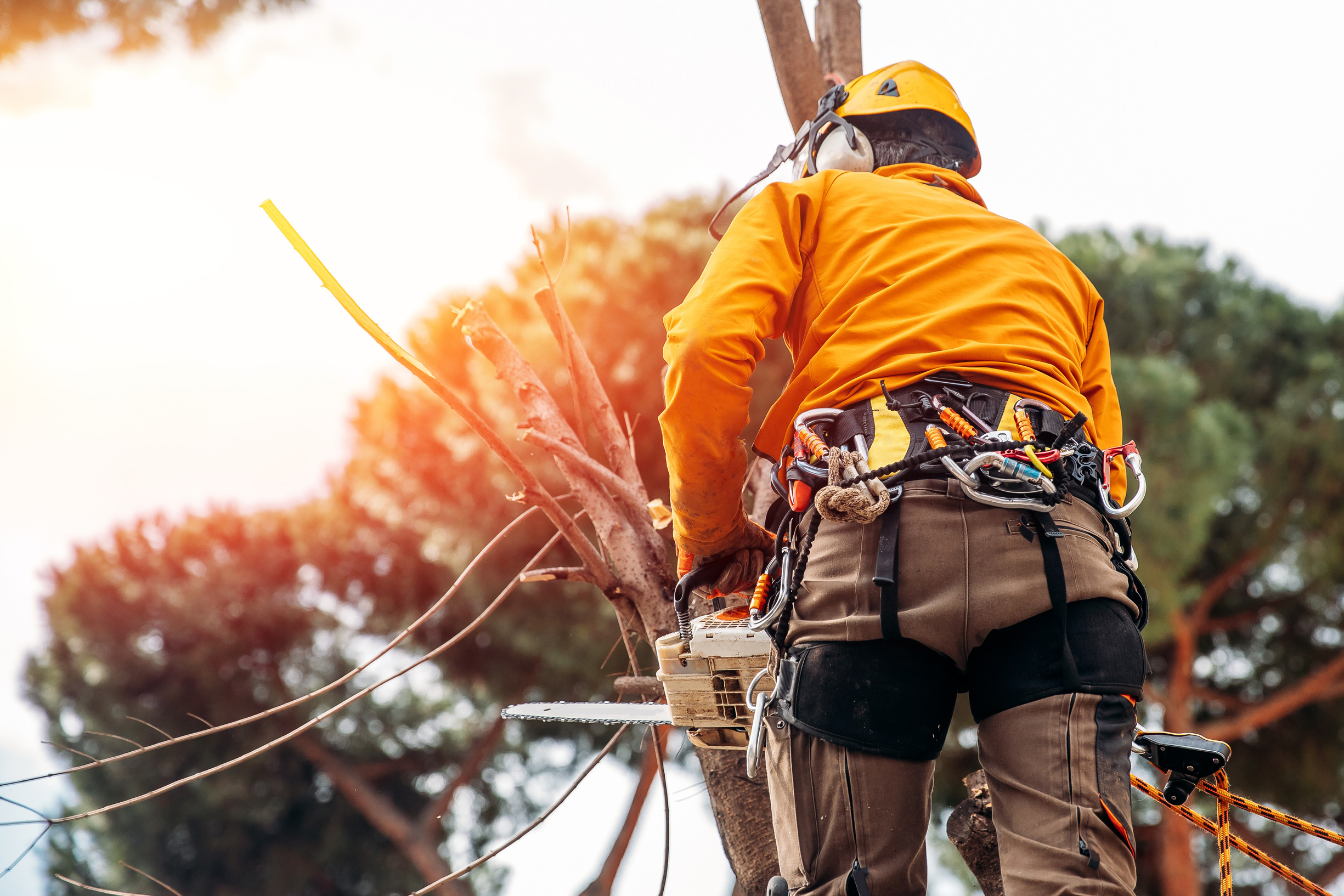Five Reasons Why Vegetation Management Matters and the Role of Satellite Intelligence
Power grids are the backbone of the energy system, and their resilience is critical to maintaining the delivery of reliable electricity.

The expansive nature of power grids, however, exposes them to various risks, with vegetation being one of the primary threats. Overgrown trees can interfere with power lines, causing outages and other serious issues that compromise the stability of the power supply.
Vegetation management involves the systematic maintenance of vegetation around power lines and utility infrastructure to prevent these disruptions. In this article, we delve into the critical importance of utility vegetation management, examining its far-reaching implications for utility operators and the broader society. We will also explore how advancements in satellite intelligence are revolutionizing these practices, enhancing the efficiency and effectiveness of vegetation management efforts.
1. Ensuring Business Continuity and Safeguarding Reputation
For utility companies, maintaining continuous and reliable service is paramount. Overgrown trees and vegetation can interfere with power lines, causing outages and disruptions. These interruptions not only inconvenience customers but can also lead to significant financial losses for businesses and the utility providers themselves. Effective vegetation management minimizes the risk of such disruptions, ensuring that power remains steady and reliable.
Moreover, a utility company’s reputation is closely tied to its reliability. Frequent outages due to poorly managed vegetation can damage the trust and confidence that customers place in the utility provider. By investing in robust vegetation management programs, companies can enhance their reputation, demonstrating their commitment to delivering consistent, high-quality service.
2. Promoting Economic Stability
Power outages and disruptions caused by unmanaged vegetation can have far-reaching economic impacts. Businesses rely on continuous power to operate efficiently, and any interruption can result in lost productivity, revenue, and potential damage to equipment. For instance, manufacturing plants, data centers, and healthcare facilities are particularly vulnerable to power disruptions.
Furthermore, the costs associated with repairing damage from vegetation-related outages can be substantial. By proactively managing vegetation, utilities can reduce the frequency and severity of outages, thereby minimizing the associated economic costs. This proactive approach not only benefits the utility companies but also supports broader economic stability by ensuring that businesses can operate smoothly without the threat of unexpected power loss.
3. Enhancing Public Safety and Well-Being
Public safety is a critical concern when it comes to utility vegetation management. Overgrown trees and vegetation near power lines pose significant hazards, including the risk of fires, electrical shorts, and even electrocution. In regions prone to wildfires, such as California, poorly managed vegetation can exacerbate the spread and intensity of fires, leading to catastrophic consequences for communities.
Regular maintenance and clearing of vegetation around power lines help mitigate these risks, protecting the public from potential harm. Additionally, ensuring that emergency services and critical infrastructure, such as hospitals and fire stations, have uninterrupted power is vital for public well-being. Effective vegetation management supports these essential services, enabling them to function properly during emergencies.
4. Supporting Sustainability
While utility vegetation management is crucial for promoting safety, it also plays a significant role in environmental conservation. Unchecked vegetation can lead to the destruction of natural habitats and the disruption of local ecosystems. Conversely, responsible vegetation management practices can help preserve biodiversity by maintaining the health and stability of these ecosystems.
One such practice is the adoption of targeted interventions. These interventions are designed to selectively remove or prune only hazardous trees while nurturing and preserving the rest. By employing this approach, a delicate balance is struck between safety considerations and ecological well-being. Utility companies that prioritize these sustainable practices exemplify their commitment to environmental stewardship and actively contribute to building a more sustainable future.
5. Achieving Legal and Regulatory Compliance
Utility companies are subject to various regulations and standards designed to ensure the safe and reliable delivery of electricity. These regulations often include specific requirements for vegetation management to prevent outages and ensure public safety. Failure to comply with these regulations can result in hefty fines, legal action, and increased scrutiny from regulatory bodies.
By adhering to established vegetation management guidelines, utility companies can avoid legal repercussions and maintain their operating licenses. Compliance with these regulations not only protects the company from legal risks but also reinforces their responsibility to the communities they serve.
Enhancing Utility Vegetation Management Practices with Satellite Intelligence
The integration of satellite intelligence into utility vegetation management represents a significant advancement, revolutionizing the way utility companies enhance their vegetation management practices. By offering precise, actionable insights, satellite intelligence empowers utility companies to optimize their vegetation management efforts in several key ways:
- Frequent Monitoring: Continuous satellite surveillance provides near real-time updates on vegetation changes. This ongoing monitoring means that utility companies can swiftly respond to emerging threats, ensuring timely interventions and reducing the risk of power outages.
- Data-Driven Decision Making: With high-resolution imagery and accurate data from satellite technology, utility companies can make well-informed decisions about where and when to deploy resources. This ensures that maintenance efforts are concentrated in areas with the highest need, optimizing resource use and reducing costs.
- Predictive Analytics: Satellite intelligence allows utility companies to predict future vegetation growth patterns. This predictive capability enables proactive maintenance scheduling, reducing the likelihood of unexpected outages and improving service reliability.
- Process Automation: Satellite intelligence enables the automation of various aspects of vegetation management, streamlining workflows and increasing operational efficiency. Automating risk monitoring and analysis reduces manual labor requirements and allows personnel to focus on higher-value tasks, such as decision-making and intervention planning.
- Improved Contractor Management: Satellite intelligence facilitates improved contractor management by providing comprehensive visibility into vegetation management activities. Contractors can access satellite-derived data and insights, enabling them to plan and execute their work more effectively. Additionally, satellite technology allows for remote monitoring of contractor performance, ensuring adherence to project timelines and quality standards. This enhanced oversight leads to better coordination, communication, and collaboration between utility companies and contractors, resulting in more successful vegetation management projects.
Conclusion
Satellite intelligence is transforming utility vegetation management by providing comprehensive, near real-time data that enhances management practices. This technology enables utility companies to make data-driven decisions, predict future vegetation trends, and improve contractor management. As satellite technology continues to advance, its role in utility vegetation management will only grow, offering even greater benefits in terms of safety, efficiency, and sustainability. By embracing satellite intelligence, utility companies can ensure more reliable service, better protect public and environmental health, and maintain compliance with regulatory standards.
If you want to learn more about our solution, please reach out to one of our experts or schedule a demo through this link.
This article was originally published by LiveEO.


